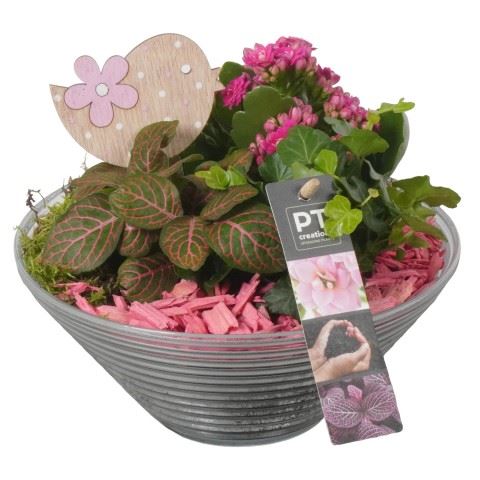arrangements indoorplants
arrangements indoorplants
Couldn't load pickup availability
PTIG6801,rijpstd:,3 cutting(s)/pot 19cm
Growing indoor plant arrangements involves selecting compatible plants, arranging them aesthetically, and providing appropriate care. Here’s a guide to help you grow a thriving and visually appealing indoor plant arrangement:
1. Choose Complementary Plants: Select indoor plants with similar light, water, and humidity requirements. Consider variations in size, shape, and foliage color for an attractive mix.
2. Container and Soil: Use well-draining potting mix suitable for the types of plants you’ve chosen. Ensure the container has drainage holes to prevent waterlogged soil.
3. Arrangement Design: Plan the arrangement with an understanding of the growth habits and space requirements of each plant. Place taller or larger plants towards the back or center and smaller ones towards the edges.
4. Light Requirements: Group plants with similar light needs together. Consider the light levels in your space and place plants accordingly. Common indoor plants like pothos, snake plants, and ZZ plants tolerate low to moderate light.
5. Temperature and Humidity: Keep indoor plants within their preferred temperature range. Most common houseplants thrive at temperatures between 60-75°F (15-24°C). Maintain moderate humidity levels. Use humidity trays or a humidifier if needed.
6. Watering: Water the plants according to their individual needs. Check the moisture level in the soil before watering. Avoid overwatering by allowing the top inch of soil to dry out between waterings.
7. Fertilizing: Feed with a balanced liquid fertilizer during the growing season (spring and summer). Follow package instructions for application rates.
Reduce or stop fertilizing in fall and winter when plant growth slows.
8. Grooming: Remove dead or yellowing leaves regularly to keep the arrangement looking fresh.
Prune or trim plants to maintain their shape and promote bushier growth.
9. Pest Control: Monitor plants for pests like spider mites, aphids, or scale insects. Treat promptly if an infestation occurs. Isolate new plants for a few weeks to prevent introducing pests to the arrangement.
10. Rotation: Rotate plants occasionally to ensure even growth on all sides and prevent one side from receiving more light than the other.
11. Support: Provide stakes or supports for tall or vining plants if needed to maintain an upright form.
12. Learn Individual Plant Needs: Understand the specific care requirements of each plant in the arrangement. Some may need more attention to watering, while others may prefer drier conditions.
By customizing care based on the needs of each plant in your indoor arrangement, you can create a harmonious and healthy display of greenery. Pay attention to each plant’s response and adjust care as necessary to maintain a vibrant and thriving indoor plant arrangement.
Share

